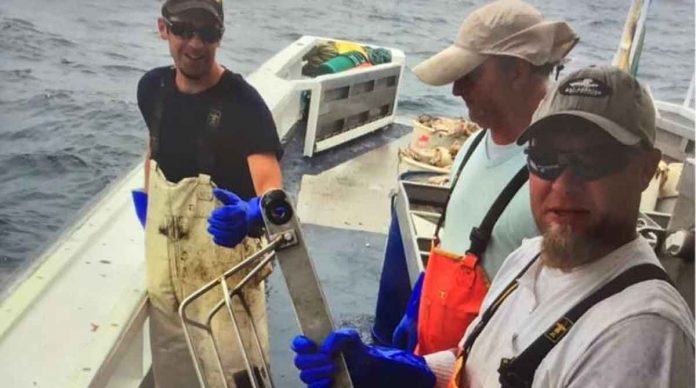A new study led by the Woods Hole Oceanographic Institution (WHOI) reveals a significant increase in the frequency of warm saltwater intrusions from the deep ocean to the continental shelf along the Middle Atlantic Bight, which stretches from the Gulf of Maine to Cape Hatteras, North Carolina. Using data from NOAA’s National Marine Fisheries Service Ecosystem Monitoring programme as well as data from the fishing industry, the study’s findings show that ocean exchange processes in this region have changed dramatically over the last 20 years.
The findings of the study were recently published in the Journal of Geophysical Research: Oceans.
“I believe the paper is significant because it quantifies an ocean process that is changing, potentially as a result of ocean warming and more stratification,” said Glen Gawarkiewicz, WHOI senior scientist and paper corresponding author. “These findings may have far-reaching implications for the shelf ecosystem. Given the increased frequency of mid-depth salty intrusions along the Mid-Atlantic Bight, numerical simulations of this process will be required to account for salt budgets for the continental shelf and slope.”
When warm, salty seawater moves toward the continental shelf’s edge, it “intrudes” on cold, fresh continental shelf water. In this study, scientists like Gawarkiewicz have noticed that more intrusions are moving in at mid-depth and reaching up to 60 miles on shore, carrying warm offshore water long distances.
“Water in this region is becoming less like Arctic water and more like tropical Atlantic water,” Gawarkiewicz said.
Gawarkiewicz and his colleagues examined over 20,000 profiles gathered by research and fishing vessels over the last three decades. Despite the fact that the salinity profiles were dispersed in space and time, the data revealed numerous mid-depth salinity maximum intrusions, which have increased significantly since 1998. A 2003 paper found that intrusions happened about 10% of the time, and this new study finds that it happens 18% of the time. The researchers are looking into a possible link between the annual rate of formation of warm core rings, which are eddies that form and break off from ocean currents like the Gulf Stream.
“There is increasing evidence that conditions are changing rapidly across the entire ecosystem, with offshore waters influencing the shelf more frequently and on very different timescales than we have seen in the past,” said Paula Fratanoni, Chief of the Oceans and Climate Branch at the National Marine Fisheries Service’s Northeast Fisheries Science Center and paper co-author. “It is critical that we work together to better understand these processes and any potential impacts on critical shelf habitats.”
These findings are significant not only for physical oceanography and climatology research but also for the commercial fishing industry.
“This is a fantastic opportunity for interaction with the fishing community, assisting them in recognizing these mid-depth intrusions once they log a profile. They can then use it to decide where to fish and where to focus the majority of their efforts “Gawarkiewicz explained. “Future research is needed to determine how the increasing frequency of this important process may be affecting continental shelf heat and salt balances, as well as the continental shelf ecosystem as a whole. This study is useful in quantifying processes that may hasten ecosystem realignment, particularly when addressing issues such as food insecurity.”

